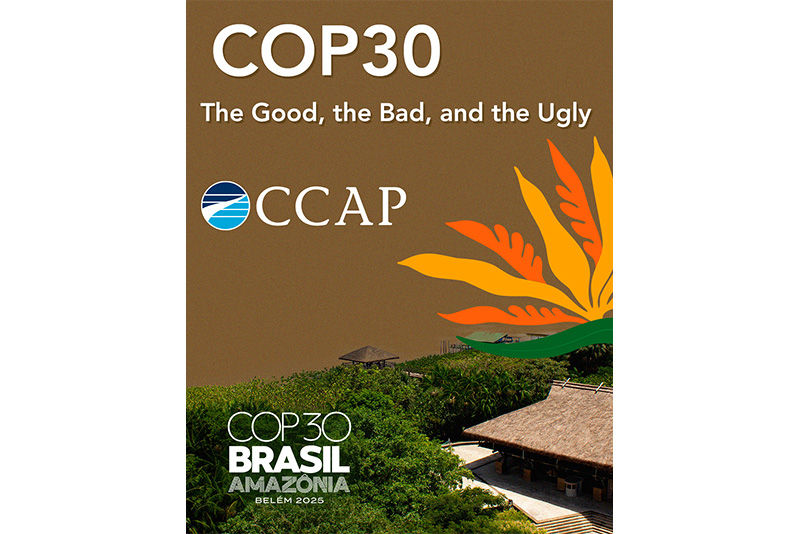Extreme Weather Trends, Climate Science, and Public Opinion
- Steve Winkelman
- Nov 29, 2012
- 4 min read
The social, physical and economic devastation of Hurricane Sandy will be felt for many weeks and months to come. Sandy brought record precipitation and storm surge to the U.S. East Coast; more than 8 million households lost power and over 100 fatalities were reported. The latest estimates of economic losses range from $30 to $50 billion (Eqecat, IHS Global Insight).
In light of the storm’s impacts, New York City Mayor Michael Bloomberg stated “Our climate is changing. And while the increase in extreme weather we have experienced in New York City and around the world may or may not be the result of it, the risk that it might be – given this week’s devastation – should compel all elected leaders to take immediate action.” In the wake of these comments, let us review the science and the public perception of climate change.
What does the Public think?
Despite some variations over the last 5 years, approximately two thirds of Americans think that climate change is occurring (Figure 1) according to recent surveys from Gallup (52%), Pew (63%), Brookings (65%), Yale (66%), and Stanford (73%). A recent Stanford/Reuters/Ipsos survey found that of those respondents who believe that global warming is happening, 72% believe it is either mostly or partly caused by human activity. Recent surveys find that large majorities of Americans support federal climate policy on climate change. According to a Yale survey (August 2012), 88% of American voters support action to reduce climate change. A few other polls (e.g. U.T. energy poll) indicate consistent data. Post Hurricane Sandy, a majority of Americans say that climate change is adding to the severity of recent extreme weather, and that they are worried about the growing cost and risks of extreme weather disasters fueled by climate change.

Response to the question: “Is Global Warming Happening?” Vertical bars express sampling error at 95 percent confidence interval. The variation in survey values may result from the phrasing of the survey questions. For example, Brookings asked whether there is “solid evidence” for recent warming, Stanford asked for a “personal opinion” as to whether global temperature is “probably” “going up slowly,” and Gallup asked whether the effects of global warming are occurring “now,” “within a few years,” a later time, or never. Similarly only 2 percent of respondents to the Stanford survey answered “I don’t know,” versus 11 percent for Brookings and 20 percent for Yale. Gallup, Pew, Yale, Brookings 2011, Brookings 2012, Stanford/Reuters/Ipsos 2011, Stanford/Reuters/Ipsos 2012.
What are Scientists concluding?
The scientific consensus is that climate change is occurring and is anthropogenically caused. Since 2007, no scientific body of national or international standing rejects the findings of human-induced effects on climate change. Of climate scientists, 84 percent agree that anthropogenic climate change is occurring, while only 5 percent disagree with the idea that human activity is a significant cause of global warming. Of the climate researchers most actively publishing in the field, 97 percent support the tenets of anthropogenic climate change outlined by the IPCC.
A second scientific consensus is that the frequency and severity of extreme weather events are increasing. In the last two years, the United States has experienced twice the average frequency of record extremes in temperature, precipitation, drought, and tropical cyclones (NOAA). In 2011 alone, a historic combination of 14 “billion dollar events” including fires, droughts, floods, and severe precipitation events (NOAA, NCDC) occurred. The first ten months of 2012 were the warmest on record in the contiguous U.S., and July 2012 was the hottest month on record. Recent extreme weather causing severe damage includes moderate to extreme drought throughout 64 percent of the contiguous U.S. (in September), wildfires on more than 1.3 million acres, severe thunder and ice storms, and hurricanes Isaac and Sandy. We have also experienced record trends globally; the year 2011 was one of the 15 warmest years on record, with total global economic losses from extreme events at roughly $375 billion (Swiss Re, Munich Re). Global records and damages are continuing through 2012, such as the smallest ever extent of Arctic ice in recorded history (NASA).

Scientists have rigorously tested possible links between climate change and certain extreme weather events (e.g., American Meteorological Society). The consensus is that climate change has historically increased and is predicted to continue increasing the probability of certain extreme events such as heat waves, heavy precipitation events, and local flooding (IPCC, House minority). Baseball fans might think of the link between climate change and certain extreme weather events as similar to the link between steroids and homeruns: while it’s very difficult to attribute any one homerun (extreme weather event) to the effect of steroids (climate change), steroids definitely cause more homeruns. Note, not all weather may be worsened by climate change; for some precipitation events (e.g. tornadoes, ice storms), scientists are still considering what will happen. The next National Climate Assessment, a U.S. status report on climate change science and impacts, will be released in 2013.
Minimizing Suffering while Maximizing Physical and Economic Resilience
The evidence is clear that climate change is occurring, and extreme weather events will increase in frequency and severity. The discussion must move beyond the problems, and focus on the solutions. John Holdren, presidential science advisor, frames three choices when it comes to climate change: mitigation, adaptation, and suffering. We can minimize suffering by taking robust action to reduce greenhouse gas emissions (mitigation) and enhancing our physical and economic resilience to the increasing impacts of climate change (adaptation).
As noted in recent CCAP blog posts, there are many opportunities in the U.S. and in developing countries to advance multiple economic, social and environmental goals through comprehensive mitigation and adaptation efforts on the part of governments (national, state and local) and the private sector.




Comments